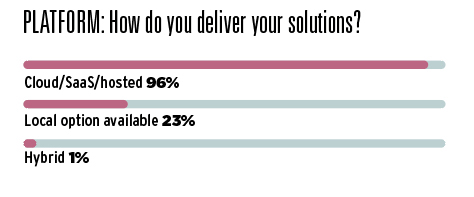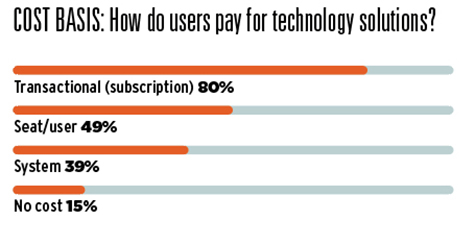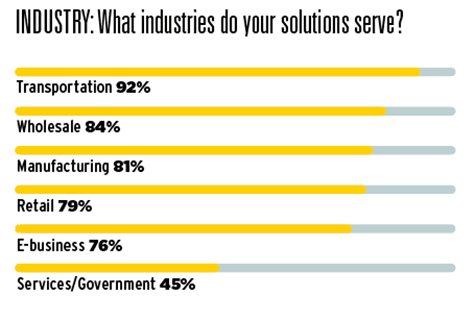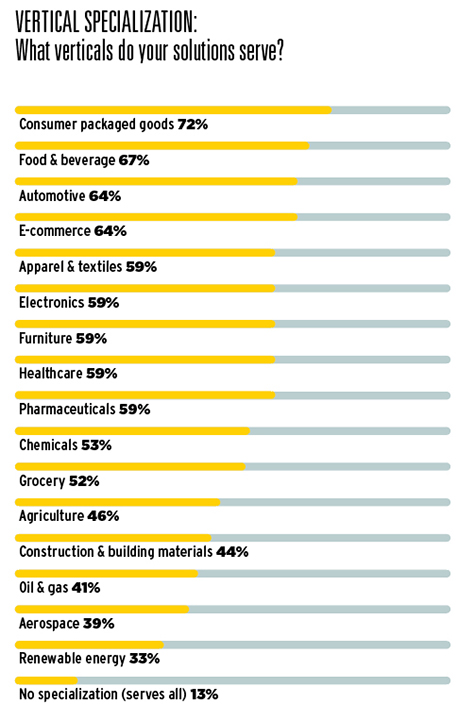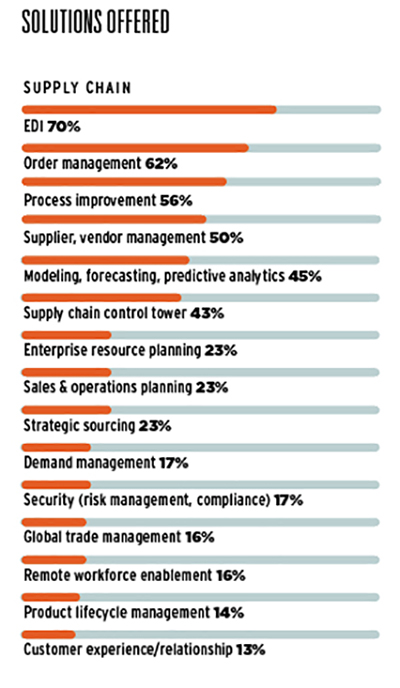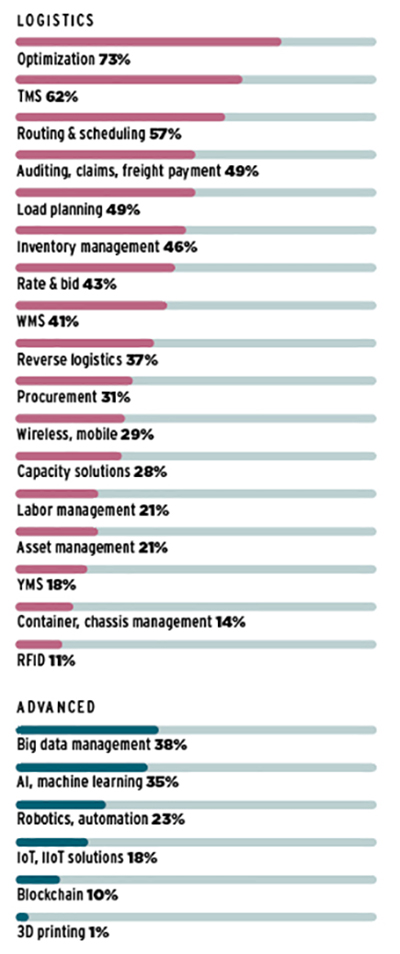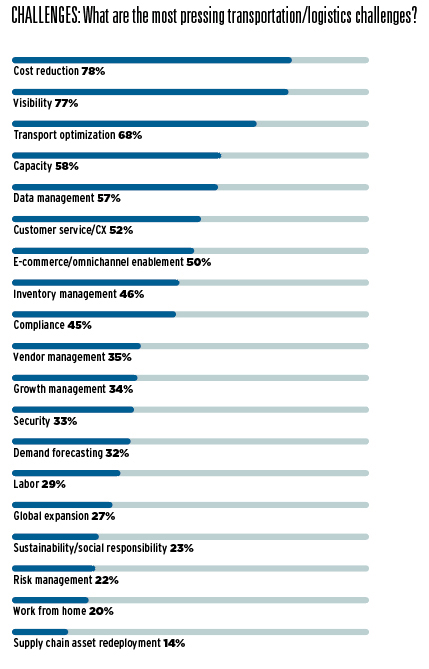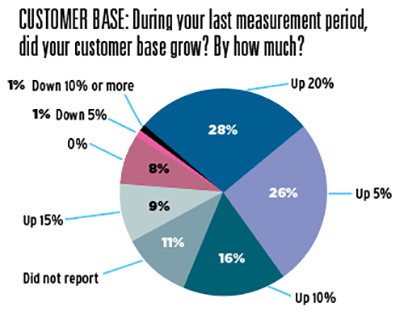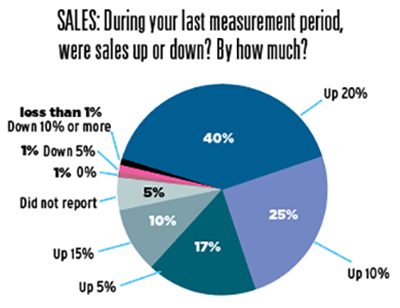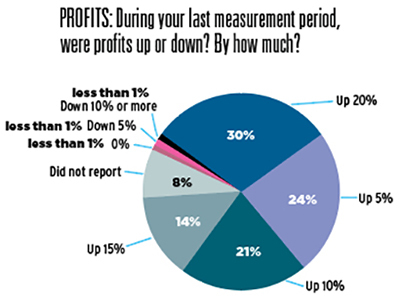2021 Logistics IT Perspectives
How has the pandemic shaped the landscape for logistics technology? What new challenges do shippers face today, and what solutions do vendors offer? Our annual logistics IT market research report tells the story.
In spring 2020, as COVID-19 turned the world upside down, companies scrambled to keep hospital supply rooms and store shelves stocked with necessities.
What’s Driving Growth?
Transportation Challenges Amplify
One year later, there’s rarely a problem finding hand sanitizer or masks. But supply chains still contend with all sorts of other pressures born of the pandemic—an ongoing surge in e-commerce orders, port congestion, tight transportation capacity, elevated freight rates, and more.
No wonder vendors of logistics IT solutions are having a good year. When market conditions make it hard to match product supply with customer demand, information technology helps shippers analyze and automate their way toward more profitable performance.
In the future, as the pandemic winds down, supply chains will need to shift to a new normal that no one can envision from where we stand now. Will we go back to working, learning, socializing, and shopping as we did in 2019, or will some of the behaviors of 2020-2021 endure?
Whatever the answer, logistics IT will help companies track the trends, plan for new demand patterns, develop strategies to meet those demands, and execute new strategies as efficiently and cost-effectively as possible.
To help demand-driven enterprises understand the role IT solutions can play in their operations, each year Inbound Logistics conducts a survey of logistics technology providers. We gather data on current trends in logistics IT to gain insights on what solutions are available, and to learn how logistics professionals are investing their resources in these new solutions.
After you read this report, check out the annual Inbound Logistics Top 100 Logistics IT Providers, our guide to the leading purveyors of IT solutions. The next time you’re ready to give your supply chain a digital boost, this guide can help point you toward the partners you need.
Cloud hosting remains the dominant way to deliver logistics IT solutions. In 2020, 100% of IT vendors who responded to the survey offered software as a service (SaaS). This year, that number is similar—96%. The proportion of vendors who also offer on—premise implementations has dropped significantly, from 42% in 2020 to 23% in 2021. One percent of respondents offer a hybrid solution, with some functions residing on the shipper’s premises and some in the cloud.
Source: Inbound Logistics Market Research
Given the dominance of cloud delivery, it stands to reason a large majority—80%—of technology providers would offer their solutions by subscription. Just fewer than half of respondents offer a per—seat or per—user payment option.
The most striking change is in the percentage of IT vendors that sell systems outright to customers—39% in 2021 vs. 61% in 2020. That drop corresponds to the COVID—related impact on on—premise implementations. The survey also shows more vendors provide at least some IT solutions free of charge, bundling them with paid services: 15% this year vs. 8% in 2020.
Source: Inbound Logistics Market Research
One year ago, a healthy 69% of logistics IT vendors offered solutions to support e—commerce. Given the tremendous boost the pandemic provided to online sales, it’s no surprise to see that indicator rise to 76% in the 2021 survey. But transportation stands at the top of the list right now; 92% of respondents say they offer technologies for that industry, up from 81% last year.
At 84%, wholesale stands slightly higher than it did at 81% in 2020, while retail remains at about the same level. Manufacturing, served by 81% of respondents, also remains unchanged since last year. Could this indicate that despite the problems U.S. companies have had sourcing and shipping goods from abroad over the past year, manufacturing is not moving back to our shores in significant numbers?
Source: Inbound Logistics Market Research
Among the logistics IT vendors who specialize in particular product markets, the most dramatic change has been in agriculture. In 2020, 85% of respondents served that market; in 2021, that number is just 46%. Aside from that, the verticals that topped the list in 2020 retain their dominance in 2021, although with smaller percentages in almost every case.
For example, last year 81% of IT vendors served the consumer packaged goods marketplace; this year the number is 72%. Other verticals high on the list are food and beverage at 67% (vs. 74% in 2020), automotive at 64% (vs. 78% in 2020), e—commerce at 64% (vs. 66% in 2020), and apparel and textiles at 59% (vs. 66% in 2020). Although e—commerce saw a slight drop, its position relative to other verticals has improved—from ninth place last year to fourth place this year.
Source: Inbound Logistics Market Research
Among the IT solutions addressing supply chain functions, the top offerings are electronic data interchange, available from 70% of respondents; order management, available from 62%; process improvement, provided by 56%; and supplier or vendor management, provided by 50%. The supply chain solutions you would have to hunt hardest to find include product lifecycle management and customer experience management.
In the logistics category, 73% of IT vendors in our survey offer solutions for optimization; 62% offer transportation management systems; and 57% offer solutions for routing and scheduling. Only 11% provide radio frequency identification solutions.
A smaller, but significant, portion of respondents offer some of the more advanced technologies, such as big data management (38%), artificial intelligence or machine learning (35%), and automation or robotics (23%). Of course, those technologies may also be incorporated into supply chain and logistics solutions.
COVID-19 pushed product supply and demand out of balance in many industries in the past year, while also constricting transportation capacity. So it’s no wonder logistics IT vendors who responded to our survey said cost weighed most heavily on shippers’ minds.
Seventy—eight percent of vendors noted cost reduction as a critical challenge for their customers. And for shippers keeping a nervous eye on freight moving through congested ports and a tight transportation network, visibility has also been key: 77% of IT vendors noted that as a critical challenge.
Other challenges cited by one—half or more of respondents include transport optimization (68%), capacity (58%), data management (57%), customer service/customer experience (52%), and e—commerce/omnichannel enablement (50%).
Among those concerns, e—commerce/omnichannel enablement (not surprisingly) saw the biggest increase from 2020, when only 37% cited this as a critical concern for customers. Another interesting point: in a year when large numbers of workers moved from the corporate office to the home, only 20% of logistics IT vendors cited work from home as a critical challenge for their customers.
Source: Inbound Logistics Market Research
Shippers continue to invest in IT solutions to help them balance inventory with customer demand while keeping operations profitable. Most vendors in our survey report they gained new customers in their most recent measurement periods.
Twenty—eight percent saw their customer bases grow by 20%. Another 9% saw 15% growth; 16% saw 10% growth; and 26% saw 5% growth. Only 2% of vendors reported losing customers, and 8% saw no change.
Source: Inbound Logistics Market Research
Sales for logistics IT vendors were even stronger than their customer acquisitions. A healthy 40% saw sales rise by 20%. Ten percent of vendors saw a 15% increase in sales; 25% enjoyed a 10% rise; and 17% saw sales go up by 5%. Fewer than 3% of respondents reported their sales had stayed flat or decreased.
Source: Inbound Logistics Market Research
Increases in sale and customers also brought logistics IT vendors greater profits. Thirty percent of respondents reported profits were up by 20%. Another 14% saw profits rise by 15%; 21% enjoyed a 10% increase; and 24% saw profits rise by 5%.
Fewer than 3% of respondents saw profits drop or remain unchanged. That’s an improvement over 2020, when 11% of respondents said their profits had stayed flat.
Source: Inbound Logistics Market Research
What’s Driving Growth?
Here’s a sampling of comments from IT vendor respondents on why their sales continue to increase:
- “We see growing demand for parcel and LTL automation as national carriers have maximized capacity and are issuing high surcharges.”
- “Customers are more demanding than ever, placing greater needs on the supply chain to be more intelligent, predictive, and capable of delivering to customers when, how, and where they want it. They also demand end—to—end visibility and control.”
- “Customers want automation of higher—frequency carrier negotiations in sourcing of ocean, air, and ground freight movement to respond to supply chain disruptions or to new changes in supply/demand; optimization of carrier awarding in sourcing around sustainability goals; optimization of sourcing decisions for mode—shifting freight movement (i.e. ocean to air).”
- “With labor shortages and process disruptions due to lockdowns, we see an overall increase in demand for autonomous processes, digitalization of major parts of customers’ supply chains, labor management systems, and exception detection systems to ensure easy accessibility, connectivity, and continuity even in future crises.”
- “Users are finding an increasing need not only to optimize their current networks, but also to make sure their networks can adapt to increases in demand, shortages of product or delayed lead times, and more challenges that were discovered through the past year with COVID.”
Transportation Challenges Amplify
any logistics IT vendors responding to our survey cite the linked challenges of capacity and cost reduction as critical issues for shippers over the past year.
The troubles started when the pandemic shut suppliers’ factories, and then a rebound in the economy caused demand for parts and materials to surge. Consider auto parts manufacturers that can’t get materials fast enough to fill orders from their automaker customers, says Allan Miner, president, CT Logistics in Parma, Ohio, which provides freight payment, audit, and data analysis tools.
“Instead of using a truck to ship a product, they may need to charter an airplane to get it delivered, so the plants don’t shut down,” he says. Expediting freight that way is expensive.
Such problems, along with driver and capacity shortages, will continue through 2021, Miner says. He points to congestion in West Coast ports that keeps container ships sitting on the ocean waiting for berths. “They can’t get unloaded in enough time, and they can’t get the containers back in enough time to restock,” he says. “It’s a ripple effect.”
With the sudden economic recovery in 2020, demand for transportation increased faster than carriers could put sidelined equipment and furloughed drivers back on the road, says Robert Boyle, vice president of North American managed logistics at Odyssey Logistics and Technology in Danbury, Connecticut. The surge in e—commerce added to the volume, and events such as the big freeze in Texas also put the squeeze on the transportation network.
Demand forecasting became a challenge, too. Facing transportation disruptions, manufacturers that used to delay shipments until the moment they needed materials are now building safety stock. Their suppliers—Odyssey’s customers—now see orders pour in more frequently than in the past. “In this environment, it’s very difficult for our customers to plan effectively,” Boyle says.
Unusual conditions make shippers cautious, according to data captured in the Transporeon transportation procurement platform. After a lull in the pandemic’s early months, shippers started issuing more requests for quotation (RFQs) in the later months of 2020, says Krishna Gilligan, marketing manager at Transporeon in Fort Washington, Pennsylvania. “But the amount they were going out to bid for, and the number of lanes they were putting out to bid, was down about 34%,” she notes.
In a volatile transportation market, shippers want to secure capacity for essential freight but perhaps don’t want to lock in their rates for too long, she adds.
Apart from challenges caused by the pandemic, shippers also struggle with data management. “Moving data across internal systems, suppliers, carriers, brokers, and other disparate sources is every bit as challenging as moving the physical freight,” says Trevor Read, president of San Francisco—based Agistix. Stakeholders in any shipment need to be able to submit or look up information at any point in a transaction.
The Agistix data management solution addresses those challenges by automating, correlating, and normalizing data across disparate data sources.

